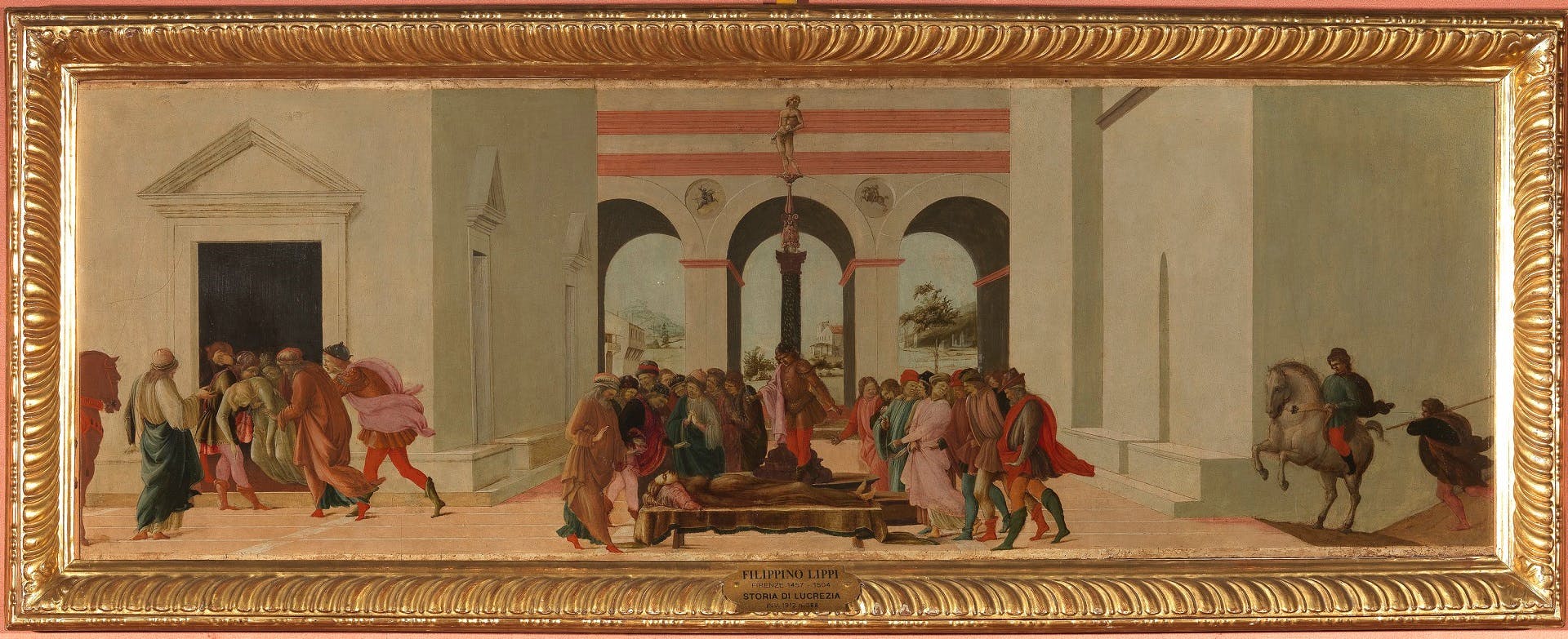The Story of Lucretia
Filippino Lippi (Prato 1457c. - Florence 1504)
The painting shows the death of Roman heroine, Lucretia, faithful, modest wife, raped by the king of the last king of Rome, to whom she had given hospitality while her husband Collatinus was absent. The woman immediately told her father of the rape before killing herself with a knife to the chest to save her honour. In the left part of the panel, Lucretia is bloodless, with the knife in her chest, supported by her husband’s embrace, while in the centre she is laid out on a catafalque for her funeral. The scene is set out of doors, in front of a column topped by the naked statue of an armed youth of uncertain identity. Among the crowd in the centre, Lucius Junius Brutus is approaching. Together with Lucretia’s family, he will be seeking revenge for the woman, inciting the people of Rome to rise up, overthrow the king and proclaim the Republic.
The subject illustrated, which praises the chasteness of Lucretia, was widely used to decorate the nuptial bedrooms in Florentine palaces of the 15th century, where there would be painted coffers, beds and bedposts. The panel painted by Filippino Lippi was part of one of these decorations and was combined with another panel - also by Lippi - showing the story of another Roman heroine, Virginia (now in the Louvre).
The painting of Lucretia’s death is a youthful work by Filippino Lippi and perhaps in terms of the composition, it was inspired by the work of his maestro, Sandro Botticelli. Filippino gives the story a large dose of emotion and dynamic tension, although it shows some clumsiness in the perspective between figured and architecture.
